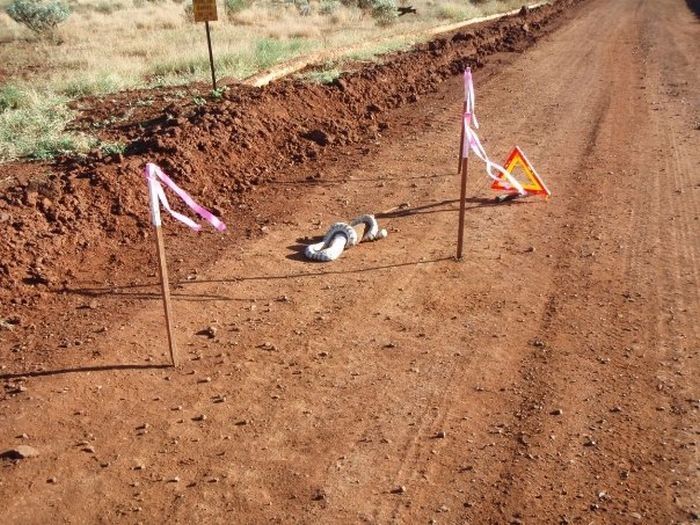|
|
Snake Eats A Lizard
|
Primitive groups among the modern snakes, pythons and boas, have vestigial hind limbs: tiny, clawed digits known as anal spurs, which they use to grasp during mating.:11 Leptotyphlopidae and Typhlopidae are other groups where remnants of the pelvic girdle are present, sometimes appearing as horny projections when visible. The frontal limbs are nonexistent in all snakes, and this loss is associated with the evolution of the Hox genes controlling limb morphogenesis. The axial skeleton of the snakes' common ancestor, like most other tetrapods, had regional specializations consisting of cervical (neck), thoracic (chest), lumbar (lower back), sacral (pelvic) and caudal (tail) vertebrae. The Hox gene expression in the axial skeleton responsible for the development of the thorax became dominant early in snake evolution and as a result, the vertebrae anterior to the hindlimb buds (when present) all have the same thoracic-like identity (except from the atlas, axis and one to three neck vertebrae), making most of the snake's skeleton being composed of an extremely extended thorax. Ribs are found exclusively on the thoracic vertebrae. The neck, lumbar and pelvic vertebrae are very reduced in number (only two to ten lumbar and pelvic vertebrae are still present), while only a short tail remains of the caudal vertebrae, although the tail is still long enough to be of good use in many species, and is modified in some aquatic and tree dwelling species.
The great diversity of modern snakes appeared in the Paleocene, correlating with the adaptive radiation of mammals following the extinction of the nonavian dinosaurs. One of the more common groups today, the colubrids, became particularly diverse due to their preying on rodents, a mammal group that has been particularly successful. There are over 2,900 species of snakes ranging as far northward as the Arctic Circle in Scandinavia and southward through Australia and Tasmania. Snakes can be found on every continent (with the exception of Antarctica), dwelling in the sea, and as high as 16,000 feet (4,900 m)in the Himalayan Mountains of Asia.:143 There are numerous islands from which snakes are absent, such as Ireland, Iceland, and New Zealand.:143
|
|









